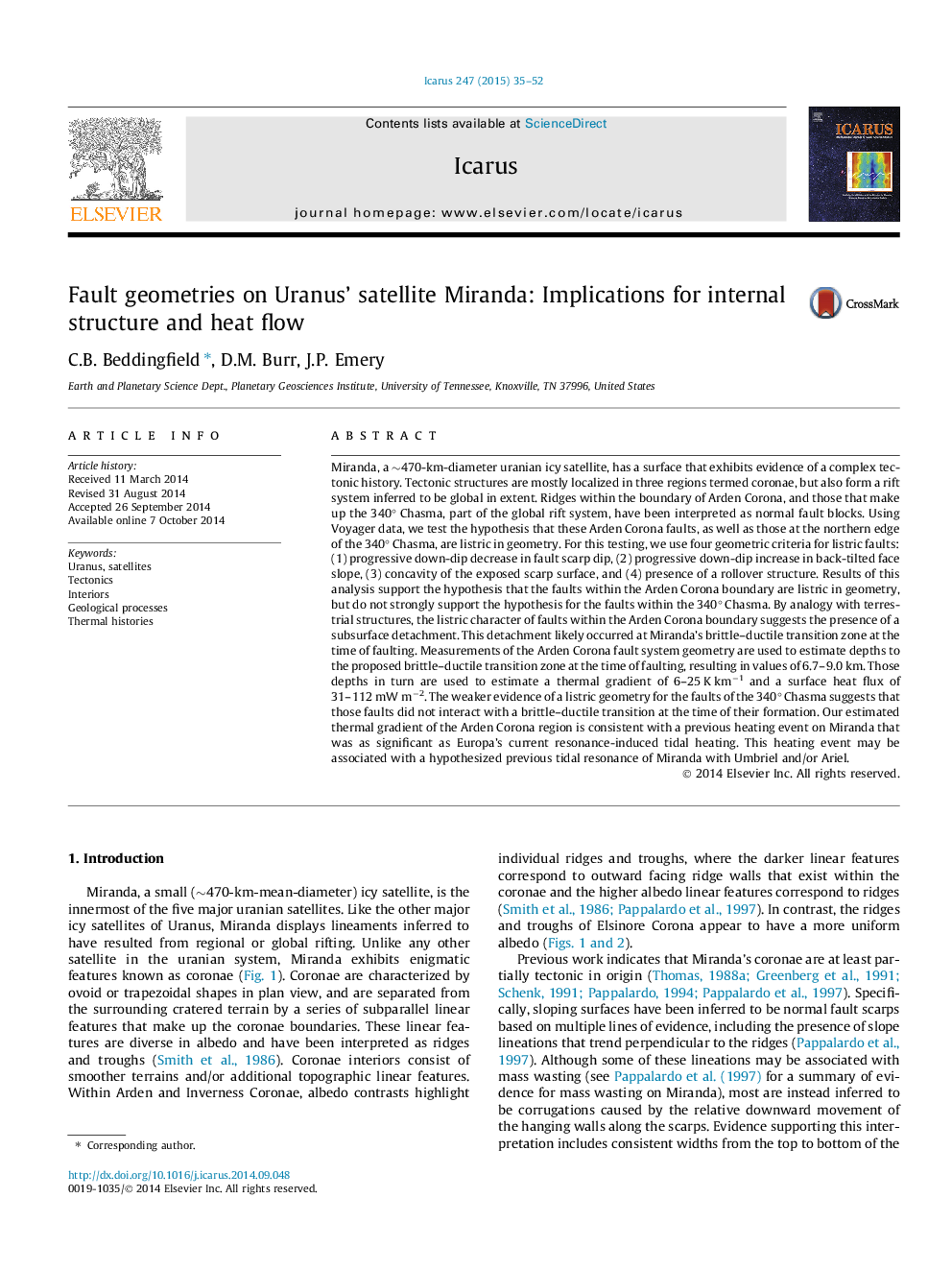| کد مقاله | کد نشریه | سال انتشار | مقاله انگلیسی | نسخه تمام متن |
|---|---|---|---|---|
| 8137023 | 1523543 | 2015 | 18 صفحه PDF | دانلود رایگان |
عنوان انگلیسی مقاله ISI
Fault geometries on Uranus' satellite Miranda: Implications for internal structure and heat flow
ترجمه فارسی عنوان
هندسه های خطا در ماهواره اورانوس میراندا: پیامدهای ساختار داخلی و جریان گرما
دانلود مقاله + سفارش ترجمه
دانلود مقاله ISI انگلیسی
رایگان برای ایرانیان
کلمات کلیدی
اورانوس، ماهواره ها، تکتونیک، فضای داخلی، فرآیندهای زمین شناسی، تاریخچه حرارتی،
موضوعات مرتبط
مهندسی و علوم پایه
علوم زمین و سیارات
علوم فضا و نجوم
چکیده انگلیسی
Miranda, a â¼470-km-diameter uranian icy satellite, has a surface that exhibits evidence of a complex tectonic history. Tectonic structures are mostly localized in three regions termed coronae, but also form a rift system inferred to be global in extent. Ridges within the boundary of Arden Corona, and those that make up the 340° Chasma, part of the global rift system, have been interpreted as normal fault blocks. Using Voyager data, we test the hypothesis that these Arden Corona faults, as well as those at the northern edge of the 340° Chasma, are listric in geometry. For this testing, we use four geometric criteria for listric faults: (1) progressive down-dip decrease in fault scarp dip, (2) progressive down-dip increase in back-tilted face slope, (3) concavity of the exposed scarp surface, and (4) presence of a rollover structure. Results of this analysis support the hypothesis that the faults within the Arden Corona boundary are listric in geometry, but do not strongly support the hypothesis for the faults within the 340° Chasma. By analogy with terrestrial structures, the listric character of faults within the Arden Corona boundary suggests the presence of a subsurface detachment. This detachment likely occurred at Miranda's brittle-ductile transition zone at the time of faulting. Measurements of the Arden Corona fault system geometry are used to estimate depths to the proposed brittle-ductile transition zone at the time of faulting, resulting in values of 6.7-9.0 km. Those depths in turn are used to estimate a thermal gradient of 6-25 K kmâ1 and a surface heat flux of 31-112 mW mâ2. The weaker evidence of a listric geometry for the faults of the 340° Chasma suggests that those faults did not interact with a brittle-ductile transition at the time of their formation. Our estimated thermal gradient of the Arden Corona region is consistent with a previous heating event on Miranda that was as significant as Europa's current resonance-induced tidal heating. This heating event may be associated with a hypothesized previous tidal resonance of Miranda with Umbriel and/or Ariel.
ناشر
Database: Elsevier - ScienceDirect (ساینس دایرکت)
Journal: Icarus - Volume 247, February 2015, Pages 35-52
Journal: Icarus - Volume 247, February 2015, Pages 35-52
نویسندگان
C.B. Beddingfield, D.M. Burr, J.P. Emery,
